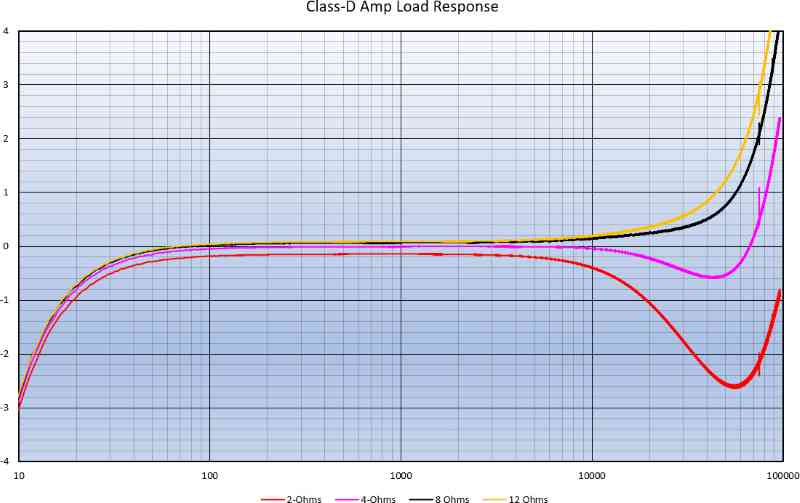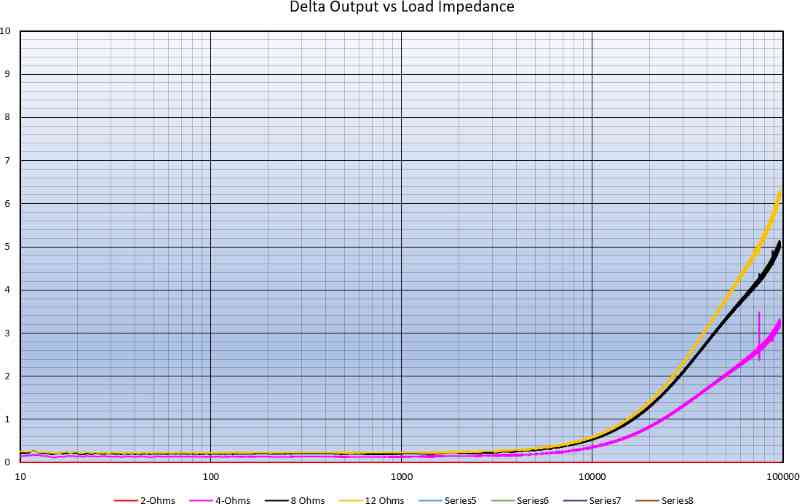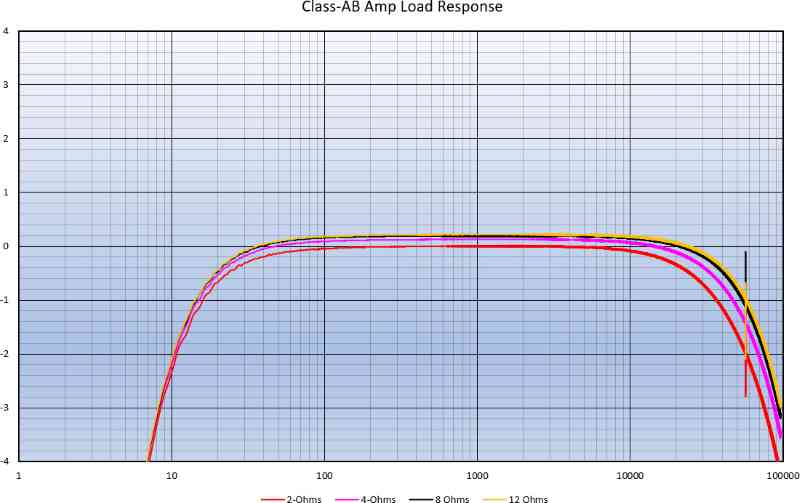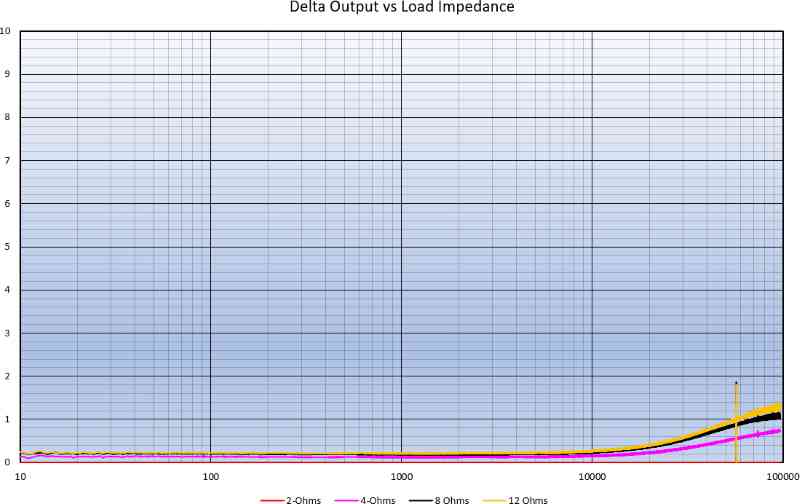I remember being at a car audio trade show about a decade ago where I overheard a conversation between a manufacturer rep and a customer about why a set of tweeters didn’t sound good on a particular amplifier. A few weeks later, I did some research on that amp to begin learning about what might have produced the customer perception. The amp in question uses a Class D output driver configuration, and further research revealed that the tweeter in mention had relatively significant inductance characteristics. Both factors likely contributed to what he heard. Allow me to explain.
Class D Amplifier Output Filters
Unlike most Class AB amplifiers, there is a passive low-pass filter on the output of every Class D amplifier. This simple resistor and capacitor circuit helps to eliminate switching noise to produce a clean audio signal. Similar filters are found in the output of a DAC in a source unit. It’s just one of those things that’s required to convert pulse-width modulated waveforms back to something free of high-frequency noise.
The components in these amplifier filter networks are designed to work with speakers of specific impedances to produce good high-frequency extension without any spikes or resonances. However, the component values and their relationship with the speaker load can result in variations in frequency response. Let’s look at a few graphs to demonstrate this phenomenon.
We’ll look at a frequency response graph of a relatively affordable five-channel Class D amplifier. The main channels of this amp are rated to produce 75 watts per channel, and the subwoofer channel is rated for up to 550 watts. The graph below shows the measured frequency response of one of the main channels with four different resistive loads connected to the speaker outputs.
The red trace is the amplifier’s frequency response when connected to a 2-ohm resistive load. The violet trace is with a 4-ohm load. The black trace represents an 8-ohm load, and the yellow trace is a 12-ohm load. If you’ve read our article about speakers not being pure resistors, you know that their impedance varies with frequency.
If you look at frequencies above about 2 kHz, you can see that the output level starts to vary based on load. By 20 kHz, an 8-ohm tweeter would be receiving about 1.3 dB more energy relative to the 1 kHz than a 2-ohm tweeter connected to the amp. Sadly, while it seems like a nice idea to have extra free output, it’s a circuit resonance and is likely to contain significant amounts of distortion. It’s usually perceived as hiss or noise. The graph below shows the increase in output from the amp as the output impedance increases, relative to the 2-ohm response curve.
Class AB Amplifier Performance
Surprisingly, I don’t have a pure Class AB amp in my lab right now. At least, not a car audio amp. I do, however, have a couple of Class GH amplifiers. The GH topology uses an AB switching device output stage with a power supply that produces different voltages. The benefit of this design is that the amp reproduces audio with the quality and clarity of an AB amp but with increased efficiency. One caveat: there are small inductors on the outputs of this GH amp, so the numbers aren’t quite as good as pure AB. But, with that said, I’ll take the boost in efficiency from a GH any day.
The graph below shows the same frequency response measurements for this Class GH amp. Again, the red trace is the amp’s output into a 2-ohm load, the violet trace is 4 ohms, the black trace is 8 ohms and the yellow trace is the frequency response into a 12-ohm resistive load.
As can be seen, the shape of the traces doesn’t vary significantly. In fact, at 20 kHz, the maximum deviation is less than 0.4 dB. This characteristic is one of the reasons why most audiophiles prefer the sound of a Class AB amplifier. The graph below shows the change in output relative to the 2-ohm load response curve.
What Does This Have To Do with Tweeters?
If you’ve stared at as many speaker specification sheets as I have, you may recognize a pattern with drivers that don’t have any inductance management technology. Features like aluminum or copper shorting rings and copper caps in midrange drivers and woofers are directly associated with better upper midrange performance. In the case of tweeters, managing inductance at higher frequencies is crucial to preventing resonance in amplifiers that use Class D outputs.
If you look at the specs of a tweeter, you’ll often see frequency response and impedance overlayed onto the same graph. For example, a good tweeter might have a rise from a nominal impedance of around 4 ohms to a peak of 5 or 6 ohms at 20 kHz.
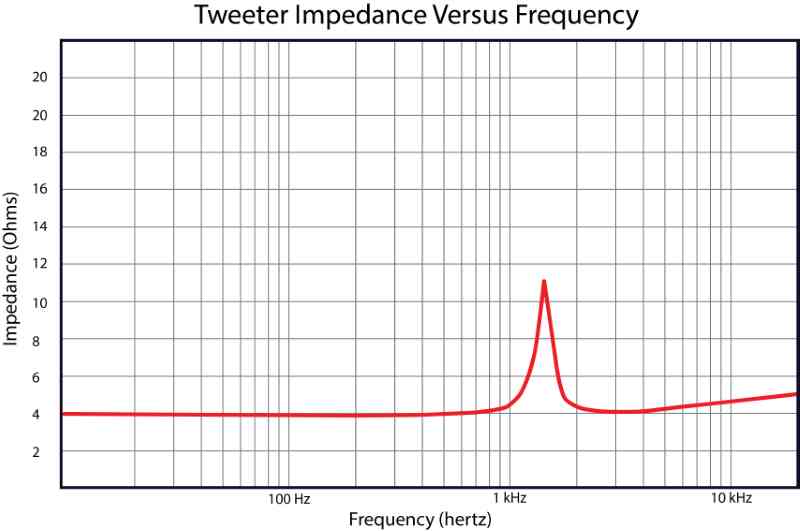
If you come across a tweeter design that presents 10 or more ohms at the highest frequencies, you may want to avoid using it with a Class D amplifier.
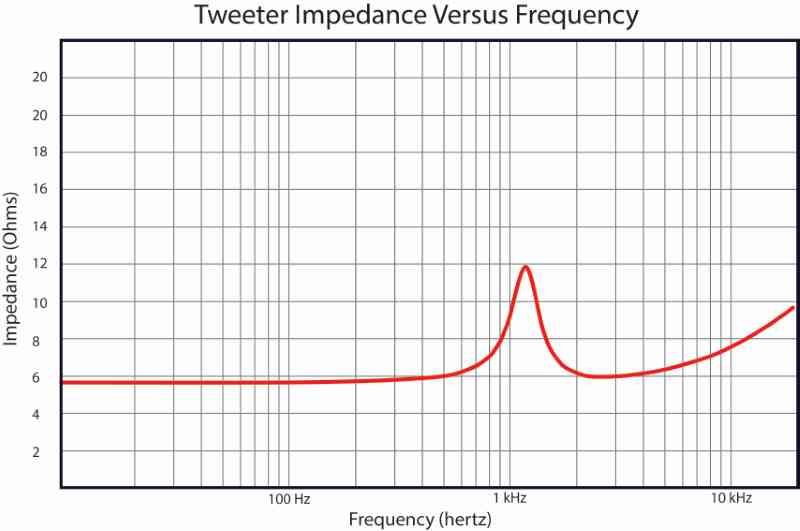
Tweeter Impedance Matters
Here’s a little something for the PA speaker folks who’re having their motorcycles upgraded or are using that type of speaker in a mobile installation. First, you’ll want to avoid using 8-ohm tweeters on Class D amplifiers as the lower nominal impedance will have this same negative effect at the highest frequencies.
If your tweeters are too loud relative to your midrange drivers, avoid using resistors in series with the speaker to attenuate the signal. Instead, you’re better off building a resistor L-Pad network. An L-pad involves adding a resistor in parallel with the speaker and a second resistor in series with both of those. The net impedance of all the resistor values maintains the same net impedance as the original speaker but wastes energy to reduce the driver’s output.
In any scenario where tweeters are too loud, the best solution is to configure the system to have those tweeters on dedicated amplifier channels. Then, your installer can fine-tune the system to your listening preferences, and there’s no need to purchase any extra components or spend time calculating resistor values. Yes, you have to buy an amp with more channels, but you benefit from nearly infinite adjustability. An even better solution is integrating a digital signal processor into the system. A DSP will give the installer complete control over output level and frequency response to make your system sound the best it can.
Choose Your Car Audio Tweeters Wisely
If you have chosen to use a Class D amplifier in your car audio system, then have a look at the spec sheet for the tweeters you have in mind. In short, you don’t want much more than 1 or 2 ohms of extra impedance at the highest frequencies. Again, your local specialty mobile enhancement retailer can assist you in finding a solution that will sound good!

